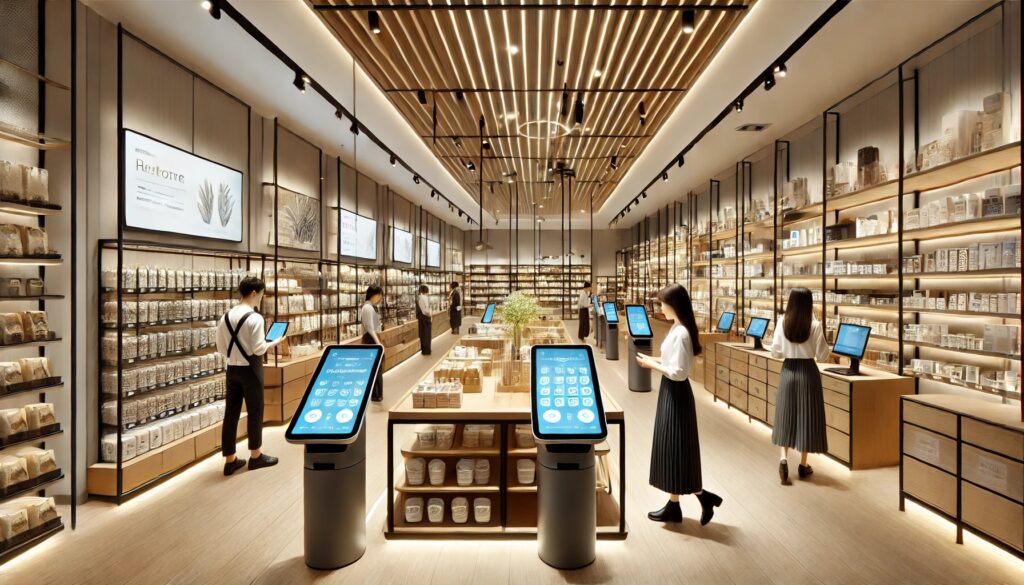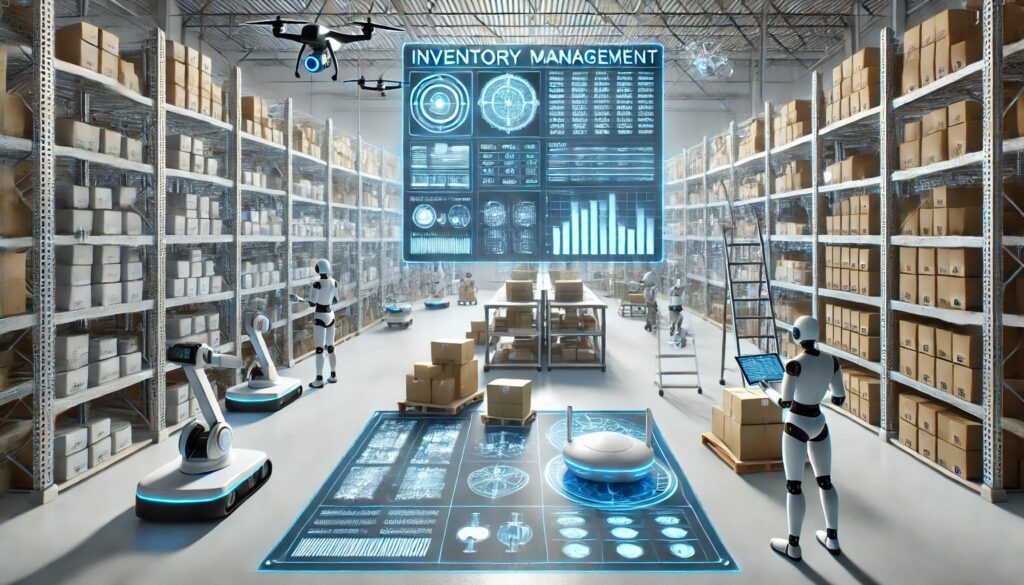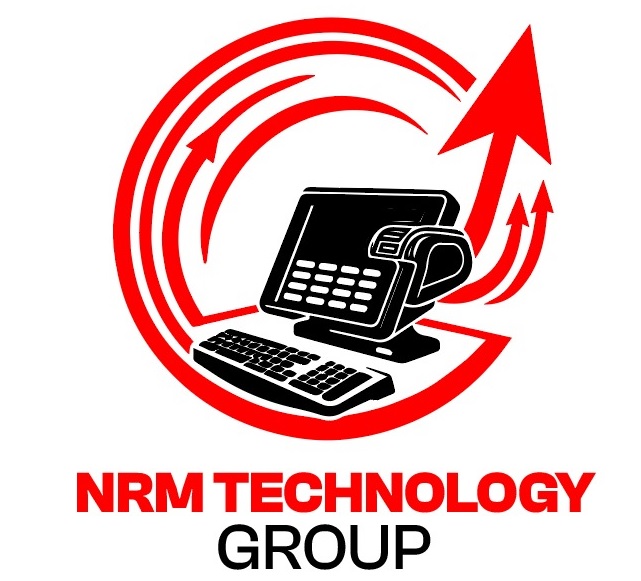Key Strategies for Success In the competitive world of retail, running efficient Retail Store Operations is essential for maintaining an edge. Whether you operate a physical store or a combination of online and offline channels, streamlining your retail operations can elevate customer satisfaction, lower expenses, and boost profits. Here are some important strategies to consider for improving your retail store operations:

Retail Store Operations
- Streamline Inventory Management
- Enhancing Employee Productivity
- Enhancing Customer Experience
- Utilize Data to Guide Decision-Making
- Automate Repetitive Tasks
- Enhance In-Store Technology
- Optimize Store Layout and Merchandising
- Minimize Shrinkage and Theft
- Focusing on Sustainability and Waste Reduction
- Foster Strong Supplier Relationships
1. Streamline Inventory Management
Effective inventory management is crucial for any successful retail operation. Inadequate inventory control can result in overstocking, stockouts, or holding onto outdated items—each of which can negatively impact your profits.

Here are some strategies to improve inventory management:
- Utilize an Inventory Management System (IMS): Invest in software that offers real-time tracking of stock levels, assists with demand forecasting, and automates the reordering process.
- Adopt Barcode or RFID Systems: Implementing barcode scanners or RFID technology can accelerate stock-taking, enhance stock accuracy, and minimize human error.
- Perform Regular Audits: Schedule routine physical counts and cycle counting to ensure that inventory records match the actual stock on hand
- Optimize Product Layout: Position fast-moving products in prime locations, while considering discounts or repositioning for better visibility of slow-moving items.
2. Enhancing Employee Productivity
Your employees represent your retail store business, and their effectiveness has a direct effect on customer service and the overall performance of your store. By investing in your team, you can achieve increased sales, improved customer satisfaction, and streamlined operations.
Ways to boost employee productivity include:
- Training and Cross-Training: Regular training sessions for your staff can enhance their product knowledge, customer service abilities, and operational efficiency. Cross-training enables employees to support one another when necessary, promoting flexibility and consistency in service.
- Task Management Tools: Implement digital task management tools or applications to assign daily responsibilities, prioritize tasks, and monitor progress. This ensures that essential activities like restocking, cleaning, and product placement are completed promptly.
- Employee Scheduling Software: Utilize software that optimizes shift schedules based on customer traffic trends, ensuring you have the appropriate number of staff during busy times while preventing overstaffing during quieter periods.
3. Enhancing Customer Experience
In today’s fast-paced world, where customer expectations are always changing, delivering outstanding customer service can set you apart from the competition. A smooth customer experience fosters brand loyalty, increases sales, and minimizes churn. Here are some ways to improve the customer experience:
- Personalized Service: Utilize customer data to create tailored shopping experiences. Whether through customized promotions, loyalty programs, or specific product recommendations, harnessing customer insights can greatly enhance satisfaction.
- Omnichannel Experience: Make sure your store provides a consistent experience across all platforms—be it in-store, online, or via mobile. Services like click-and-collect, online ordering, and mobile payments should integrate seamlessly with your physical store operations.
- Speed and Convenience: Implement self-checkout systems or mobile point-of–sale (POS) solutions to expedite transactions and cut down on wait times. Providing convenient payment options, such as mobile wallets and contactless payments, can also elevate the customer experience.
4. Utilize Data to Guide Decision-Making
Making decisions based on data can significantly enhance your operations and lead to smarter, more informed choices that boost efficiency and profitability. Using data for operational enhancements:
- Sales Analytics: Keep an eye on sales data to spot trends, popular items, and busy times. This insight will help you optimize staffing, adjust product prices, and plan promotions more effectively.
- Customer Insights: Analyze customer data (with their consent) to gain a better understanding of buying habits, preferences, and feedback. This will enable you to refine your inventory, promotions, and marketing strategies to align more closely with their needs.
- Operational Metrics: Monitor key performance indicators (KPIs) such as average transaction value, conversion rates, and sales per square foot to evaluate store performance and pinpoint areas that need improvement.

5. Automate Repetitive Tasks
Automation can help your employees dedicate more time to customer interactions and strategic initiatives that enhance your business’s value. Here are some automation opportunities in retail operations:
- Inventory Replenishment: Implement automated inventory management systems to monitor stock levels and reorder items when they hit a set threshold. This helps maintain optimal stock levels and minimizes out-of-stock occurrences.
- Price Adjustments and Promotions: Automatically implement price changes or promotions for your products, saving time and ensuring uniformity across your store or multiple locations.
- Scheduling and Payroll: Utilize scheduling software that automatically adjusts shifts based on demand, and integrate it with payroll systems for a more efficient employee compensation process.
6. Enhance In-Store Technology
Integrating the right technology into your retail store can boost customer engagement, streamline operations, and enhance overall efficiency. Key in-store technologies to consider:
- Point-of-Sale (POS) System: A modern POS system offers more than just sales processing. It can track customer data, provide real-time inventory updates, and seamlessly integrate with other business management software.
- Digital Price Tags: Implementing digital price tags that automatically update can minimize errors and reduce the labor costs tied to manually changing prices.
- In-Store Analytics Tools: Utilize foot traffic counters, heat maps, and other analytics tools to observe customer behavior. This information can guide store layouts, staffing choices, and marketing strategies.
7. Optimize Store Layout and Merchandising
The design of your store and the way you showcase products can greatly influence both sales and operational efficiency. Best practices for store layout and merchandising include:
- Easy Navigation: Make sure your store layout is straightforward and allows customers to find what they need easily. Group similar products together and place high-demand items in convenient spots.
- Seasonal and Promotional Displays: Design attractive displays for seasonal products and promotions to boost sales. Regularly update these displays to keep the shopping experience fresh and interesting.
- Efficient Checkout Areas: Streamline the checkout area to ensure quick movement of lines. A slow checkout process can lead to customer frustration and lost sales. Consider using self-checkout kiosks or mobile POS systems to reduce congestion.
8. Minimize Shrinkage and Theft
Shrinkage—stemming from theft, damage, or administrative mistakes—can greatly affect your profit margins. Adopting loss prevention strategies can help protect your inventory and enhance profitability. Here are some effective ways to reduce shrinkage:
- Surveillance Systems: Invest in high-quality security cameras and anti-theft devices such as EAS (electronic article surveillance) tags.
- Employee Training on Theft Prevention: Train employees to recognize suspicious behavior, handle inventory correctly, and apply loss prevention techniques.
- Inventory Audits: Perform regular audits and cycle counts to swiftly identify discrepancies and reduce shrinkage resulting from errors or theft.
9. Focusing on Sustainability and Waste Reduction
Sustainability is becoming a significant concern for both consumers and businesses alike. Retailers that adopt sustainable practices can draw in eco-conscious customers while also cutting down on waste and operational expenses. Sustainability initiatives can include:
- Eco-friendly Packaging: Opt for recyclable or biodegradable packaging and encourage customers to use reusable bags.
- Energy-efficient Lighting and Equipment: Invest in energy-efficient lighting, heating, and cooling systems to reduce energy costs and lessen your environmental footprint.
- Waste Reduction: Establish waste reduction programs, such as donating unsold items or recycling materials, to decrease waste and boost your store’s sustainability efforts.
10. Foster Strong Supplier Relationships
Establishing solid relationships with your suppliers can enhance your product offerings, lower costs, and guarantee timely deliveries. Ways to strengthen supplier relationships:
- Negotiate Better Terms: Collaborate with suppliers to secure better pricing, flexible payment options, or bulk discounts. Strong partnerships often lead to more advantageous agreements.
- Collaborate on Marketing and Promotions: Work together with suppliers to create joint promotions or special events that can attract customers to your store and boost sales.
- Monitor Supplier Performance: Regularly evaluate supplier reliability, delivery schedules, and product quality. If a supplier frequently falls behind or delivers subpar goods, it might be time to seek a new partner.
Final Thoughts
Improving your retail store operations is an ongoing journey that blends strategy, technology, and strong management. By fine-tuning your inventory, boosting employee productivity, utilizing customer insights, and embracing automation and technology, you can build a more efficient, profitable, and customer-focused business. The secret to success is being proactive—regularly evaluating your operations, embracing new tools and techniques, and adjusting to evolving consumer needs.
- Unlocking Benefits and Efficiency of Using a POS System in Your Retail Shop
- How Cafés and Coffee Shops in Pakistan Manage Operations with DinePlan POS Software
- How to Run a Restaurant Without Losing Your Mind
- Top Features to Look for in Your Restaurant DinePlan POS Software
- How Thermal Printers Improve Kitchen Order Efficiency
